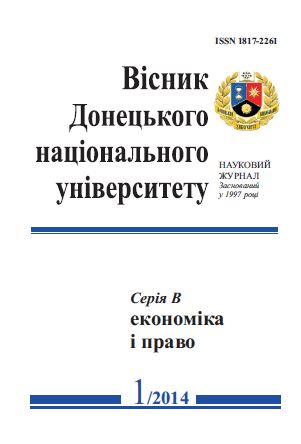The definition of non-standard forms of employment
Keywords:
standard employment, work organization, precarious employment, social and labor relationsAbstract
The increasing distribution in the innovation economy receive non-standard forms of employment that improve employee performance, reduce costs, firms in the organization of work. The main reasons contributing to the spread of precarious employment, the employer is striving to optimize the costs associated with the need to respect labor rights, taxes and perform other social obligations, in particular in the area of compulsory state social insurance. This article discusses the possibility of using various non-standard forms of employment in the organization of work of researchers and scientists. Precarious work is often not a voluntary choice of employees, as it is connected with the elimination of traditional jobs. In other cases, it is caused by the spread misunderstanding remote consequences of the transition from standard employment to its irregular forms. As a result, individuals who actually are employed are often left without the protection afforded by the standard employment. The concepts of nonstandard forms of employment, revealed their basic characteristics and features.References
Kalleberg A. Nonstandard Employment Relations: Parttime, Temporary and Contract Work // Annual Review of Sociology. 2000. № 26. Р. 341—365.
Черкасов В.Е., Ваховський Е.В. Нестандартні форми зайнятості в умовах постиндустриальной экономики / В.Е. Черкасов, Е.В. Ваховский // Научный журнал: Вестник Поволжской академии государственной службы. – 2012. – №31. С. 209-210
Есипов А.С. Заемный труд и дистанционная занятость:новые вызовы для регулирования социально-трудовых отношений / А. С. Есипов // Вестник ВГУ. Серия: Экономика и управление. – 2011. - №2. – С. 145
Гимпельсон В. Е., Капелюшников Р. И. Нестандартная занятость в Российской экономике. М.: Изд. дом ГУ ВШЭ,2006. - 400 с.
Бизюков П.В. Практики регулирования трудовых отношений в условиях неустойчивой занятости. — М.: АНО «Центр социально- трудовых прав», 2013. — 152 с.
Телятникова Т.В. Появление и развитие нестандартных форм занятости и гибких режимов работы в СССР // Российское предпринимательство. — 2012. — № 18 (240). — c. 42-46.
Никифорова А. А. Рынок труда: занятость и безработица. М.: Международные отношения, 1991. 184 с.
Оганян К. М., Стрельцов Н. М. Занятость населения и ее регулирование : учеб. пособие. СПб.: Бизнес-Пресса, 2008.372 с.
Рофе А. И., Збышко Б. Г., Ишин В. В. Рынок труда, занятость населения, экономика ресурсов для труда. М.: МИК,1997. 264 с.
Экономика труда / под ред. М. А. Винокурова, Н. А. Горелова. СПб.: Питер, 2004. 656 с.
Яковенко Е. Г., Христолюбова Н. Е., Мостова В. Д. Экономика труда : учеб. пособие. М.: ЮНИТИ, 2004. – 319с.
Рощин С. Ю., Разумова Т. О. Экономика труда: экономическая теория труда : учеб. пособие. М.: ИНФРА-М, 2001. - 400 с.

